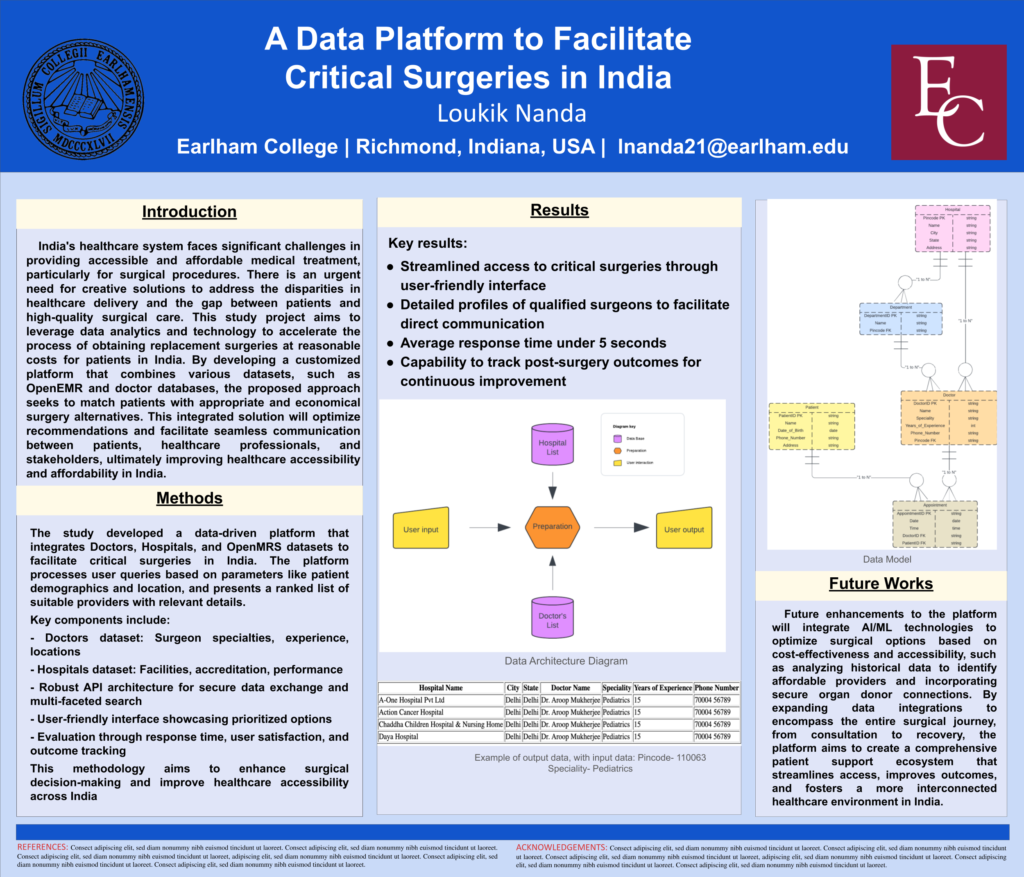By Loukik Nanda
Introduction:
India’s healthcare system has a lot of work ahead of it to provide
accessible and reasonably priced medical treatment, especially for
surgery. There is an urgent need for creative solutions that can
close the gap between patients and high-quality surgical care
because of the current disparities in healthcare delivery. The
objective of this study project is to utilize data analytics and
technology to accelerate the process of obtaining replacement
procedures at a reasonable cost for patients in India. The goal of
the proposed project is to create a customized platform that
combines many datasets, such as OpenEMR (Open Electronic
Medical Records) and doctor databases[Wol+06]. The technology
will match patients with appropriate and economical surgery
alternatives by analyzing these datasets and accounting for
variables like demographics, medical history, and budgetary
restrictions. Agarwal’s research highlights that past attempts to
use telemedicine to alleviate healthcare inequities have been
limited in their efficacy because of operational and infrastructural
complexities[Agr+13]. By building an infrastructure that can be
quickly deployed and seamlessly combines the processes of
healthcare delivery and data collection, the suggested approach
aims to get beyond these constraints. This initiative intends to
improve healthcare accessibility and affordability in India by
addressing the lack of access to cheap surgical treatment,
ultimately leading to the improvement of the nation’s healthcare
system as a whole. The suggested integrated approach will
optimize suggestions and guarantee effective surgical care delivery
by facilitating smooth communication between patients, medical
personnel, and stakeholders
Abstract:
India’s healthcare inequalities need creative fixes[Cha23]. This
study makes use of data analytics to expedite the process of
obtaining reasonably priced replacement operations. The project
offers a customized platform through the analysis of datasets such
as doctor databases and OpenEMR. It takes budgetary restrictions,
medical history, and demographics into account when matching
patients with appropriate and affordable surgery alternatives.
Optimizing suggestions through seamless communication between
patients and healthcare professionals is the goal of this integrated
solution. Through addressing the lack of access to inexpensive
surgical treatment, the project hopes to improve healthcare
affordability and accessibility, which will benefit India’s healthcare
system.
Data Architecture Diagram

Poster:

Gitlab:
https://code.cs.earlham.edu/lnanda21/senior-capstone-project
Link to the paper:
https://drive.google.com/file/d/1J2bt2in4YG7x4kK5kCv5y2j7RrR7dwDd/view?usp=share_link
Demonstration Video
https://drive.google.com/file/d/1EZ4IN_17Eav3vdzlP7beGOPJp_jfEMXF/view?usp=share_link